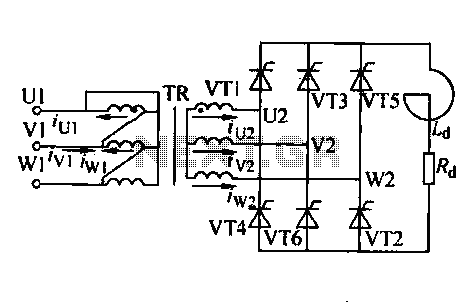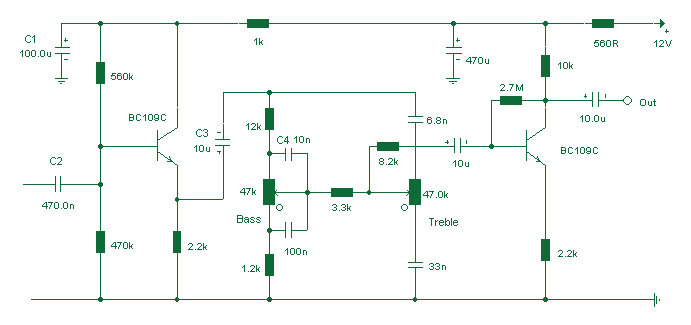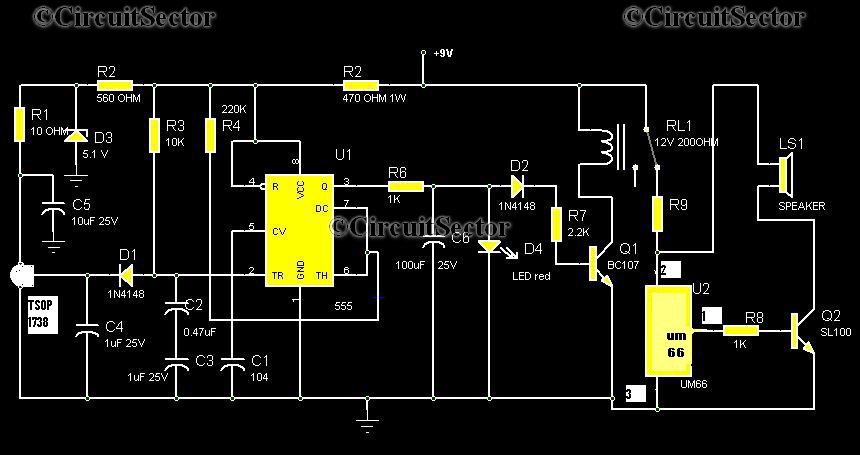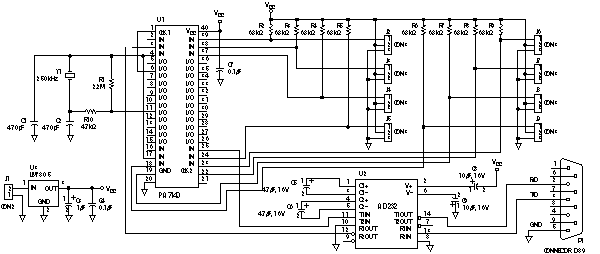
Temperature Sensing and Control
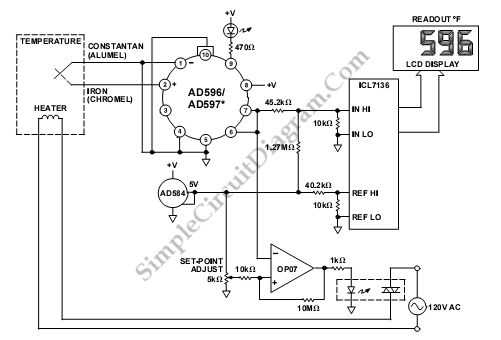
This is a temperature indication and control system utilizing the AD596/AD597. In this system, the AD596/AD597 functions as a closed-loop thermocouple signal conditioner.
The temperature indication and control system based on the AD596/AD597 integrates a thermocouple sensor to measure temperature variations accurately. The AD596 and AD597 are precision analog signal conditioning ICs designed specifically for thermocouple applications, providing a means to convert the low-level thermoelectric voltage generated by the thermocouple into a usable output signal.
In a typical configuration, a thermocouple is connected to the input of the AD596/AD597, which amplifies the small voltage signal and linearizes it according to the specific thermocouple type being used (e.g., Type K, J, T, etc.). The output can then be fed into an analog-to-digital converter (ADC) for digital processing or directly to a microcontroller for real-time temperature monitoring and control.
The system can include additional components such as operational amplifiers for further signal conditioning, filters to remove noise, and microcontroller units (MCUs) for processing the temperature data. The MCU can implement control algorithms to regulate temperature by adjusting heating or cooling elements based on the measured temperature relative to a setpoint.
Power supply considerations are crucial for this system, as the AD596/AD597 typically require a stable voltage supply for optimal performance. Proper PCB layout and grounding techniques should be employed to minimize interference and ensure accurate readings. Overall, this temperature indication and control system is suitable for various applications, including industrial process control, HVAC systems, and laboratory environments, where precise temperature management is essential.This is a temperature indication and control system using the AD596/AD597. In this system, AD596/AD597 is used as a closed-loop thermocouple signal conditioner.. 🔗 External reference
The temperature indication and control system based on the AD596/AD597 integrates a thermocouple sensor to measure temperature variations accurately. The AD596 and AD597 are precision analog signal conditioning ICs designed specifically for thermocouple applications, providing a means to convert the low-level thermoelectric voltage generated by the thermocouple into a usable output signal.
In a typical configuration, a thermocouple is connected to the input of the AD596/AD597, which amplifies the small voltage signal and linearizes it according to the specific thermocouple type being used (e.g., Type K, J, T, etc.). The output can then be fed into an analog-to-digital converter (ADC) for digital processing or directly to a microcontroller for real-time temperature monitoring and control.
The system can include additional components such as operational amplifiers for further signal conditioning, filters to remove noise, and microcontroller units (MCUs) for processing the temperature data. The MCU can implement control algorithms to regulate temperature by adjusting heating or cooling elements based on the measured temperature relative to a setpoint.
Power supply considerations are crucial for this system, as the AD596/AD597 typically require a stable voltage supply for optimal performance. Proper PCB layout and grounding techniques should be employed to minimize interference and ensure accurate readings. Overall, this temperature indication and control system is suitable for various applications, including industrial process control, HVAC systems, and laboratory environments, where precise temperature management is essential.This is a temperature indication and control system using the AD596/AD597. In this system, AD596/AD597 is used as a closed-loop thermocouple signal conditioner.. 🔗 External reference
